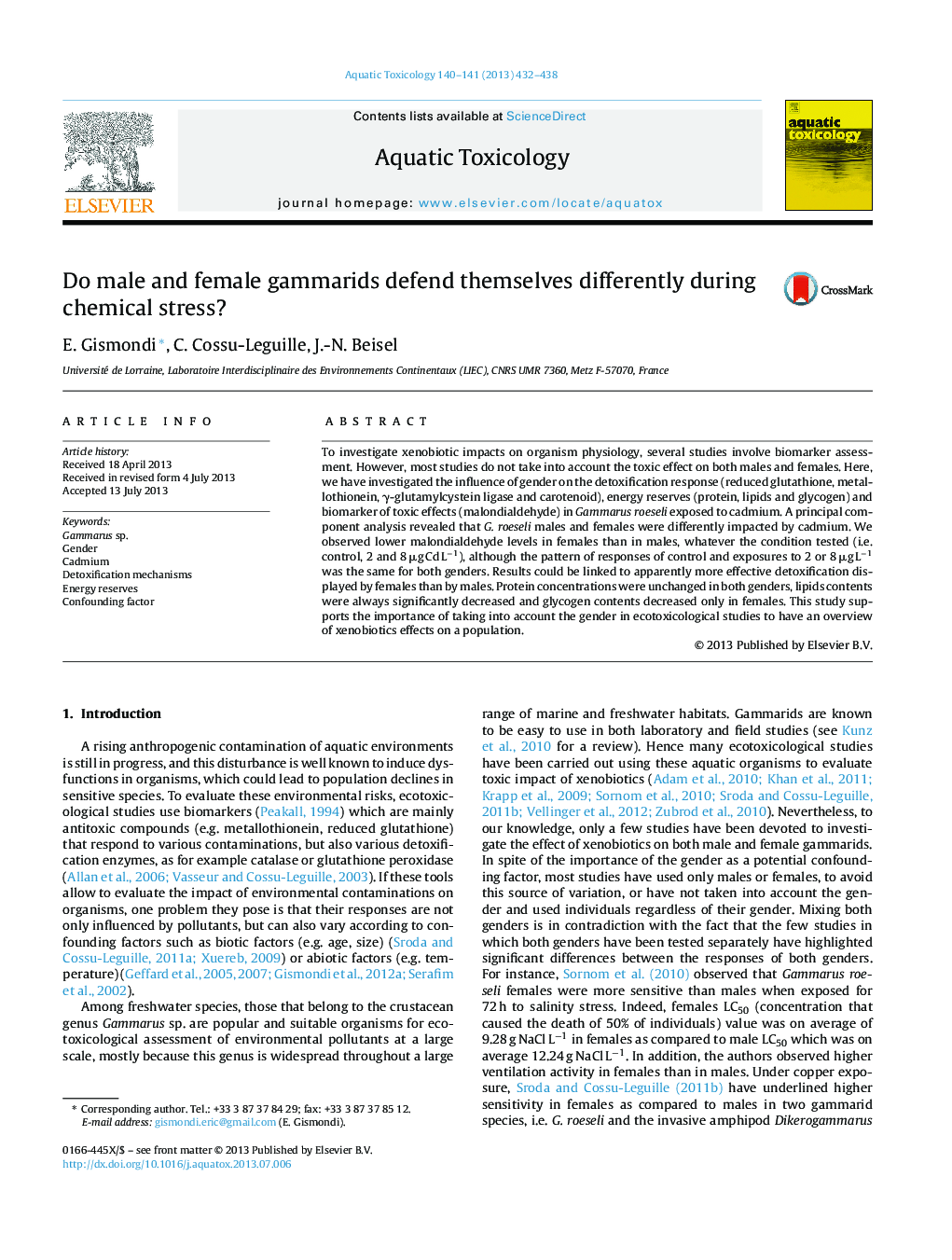| Article ID | Journal | Published Year | Pages | File Type |
|---|---|---|---|---|
| 6382574 | Aquatic Toxicology | 2013 | 7 Pages |
Abstract
To investigate xenobiotic impacts on organism physiology, several studies involve biomarker assessment. However, most studies do not take into account the toxic effect on both males and females. Here, we have investigated the influence of gender on the detoxification response (reduced glutathione, metallothionein, γ-glutamylcystein ligase and carotenoid), energy reserves (protein, lipids and glycogen) and biomarker of toxic effects (malondialdehyde) in Gammarus roeseli exposed to cadmium. A principal component analysis revealed that G. roeseli males and females were differently impacted by cadmium. We observed lower malondialdehyde levels in females than in males, whatever the condition tested (i.e. control, 2 and 8 μg Cd Lâ1), although the pattern of responses of control and exposures to 2 or 8 μg Lâ1 was the same for both genders. Results could be linked to apparently more effective detoxification displayed by females than by males. Protein concentrations were unchanged in both genders, lipids contents were always significantly decreased and glycogen contents decreased only in females. This study supports the importance of taking into account the gender in ecotoxicological studies to have an overview of xenobiotics effects on a population.
Related Topics
Life Sciences
Agricultural and Biological Sciences
Aquatic Science
Authors
E. Gismondi, C. Cossu-Leguille, J.-N. Beisel,
